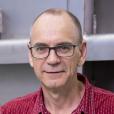
Stephen received his PhD (Physical Chemistry) from Griffith University in 1996.

Showing 601 - 620 of 775 results

Stephen received his PhD (Physical Chemistry) from Griffith University in 1996.

Sarah joined ANSTO in May as a part-time Marketing and Events Coordinator for the Nuclear Science and Technology group.

Accurate ‘fingerprinting’ tool to verify source of origin is in development with collaborators from academia and industry.
A new study by researchers from Curtin University using the infrared (IR) and X-ray fluorescence microscopy (XFM) beamlines at the Australian Synchrotron has provided a better understanding of the chemical and elemental composition of latent fingermarks.
With all excavation completed and rock removed from the underground site, the physics lab will now be built within the caverns of the Stawell Mines site.
ANSTO is coordinating and facilitating the calling of pre-concept papers for the next cycle of technical cooperative project proposals under the Regional Cooperative Agreement for Research, Development and Training Related to Nuclear Science and Technology for Asia and the Pacific (RCA) | IAEA
Australian and Taiwanese scientists have discovered a new molecule which puts the science community one step closer to solving one of the barriers to development of cleaner, greener hydrogen fuel-cells as a viable power source for cars.
Science and medical experts meet in Adelaide to discuss great potential of particle therapy in Australia
Australian-first detector to accelerate cancer research unveiled.
Nuclear techniques will be crucial tools in the development of advanced materials that sustainably convert waste heat into useful forms of energy to benefit Australia.
Two ANSTO physicist explain the three-body problem as featured in science fiction series of the same name
The nature of Metal-Oxide-Semiconductor Field Effect Transistors (MOSFETs) present a fascinating paradox in space exploration. Their strength in radiation detection becomes their weakness in space operations, exposing an Achilles' heel for NASA. Yet, these same devices monitor radiation doses received by humans on earth and in space.

Pip is a passionate creative who is obsessed with applying design thinking to any and every project she can get her hands on, no matter the topic.

The Biological Small Angle X-ray Scattering beamline will be optimised for measuring small angle scattering of surfactants, nanoparticles, polymers, lipids, proteins and other biological macromolecules in solution. BioSAXS combines combine a state-of-the-art high-flux small angle scattering beamline with specialised in-line protein purification and preparation techniques for high-throughput protein analysis.
